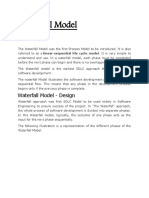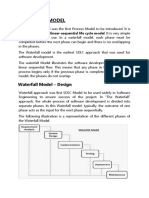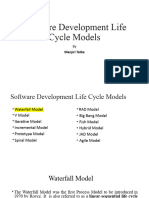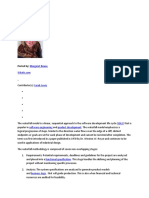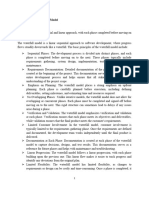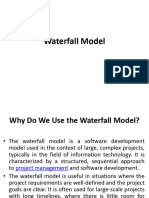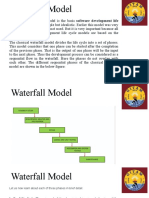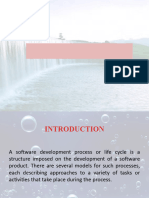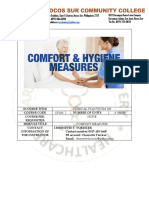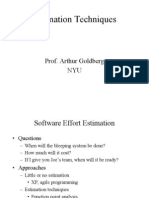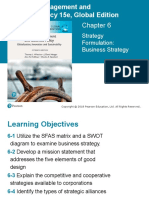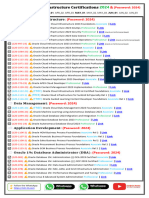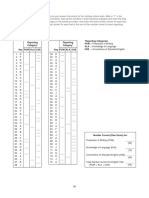0% found this document useful (0 votes)
91 views13 pagesWaterfall Model in SDLC
The Waterfall Model, introduced by Dr. Winston W. Royce in 1970, is a linear and sequential approach to the Software Development Life Cycle (SDLC) that consists of distinct phases including requirement analysis, system design, implementation, integration and testing, deployment, and maintenance. While it offers advantages such as simplicity, clear documentation, and structured milestones, it also faces disadvantages like inflexibility, late testing, and limited user feedback. This model is best suited for projects with well-defined and stable requirements, particularly in industries like construction and defense.
Uploaded by
gcettscseCopyright
© © All Rights Reserved
We take content rights seriously. If you suspect this is your content, claim it here.
Available Formats
Download as PDF, TXT or read online on Scribd
0% found this document useful (0 votes)
91 views13 pagesWaterfall Model in SDLC
The Waterfall Model, introduced by Dr. Winston W. Royce in 1970, is a linear and sequential approach to the Software Development Life Cycle (SDLC) that consists of distinct phases including requirement analysis, system design, implementation, integration and testing, deployment, and maintenance. While it offers advantages such as simplicity, clear documentation, and structured milestones, it also faces disadvantages like inflexibility, late testing, and limited user feedback. This model is best suited for projects with well-defined and stable requirements, particularly in industries like construction and defense.
Uploaded by
gcettscseCopyright
© © All Rights Reserved
We take content rights seriously. If you suspect this is your content, claim it here.
Available Formats
Download as PDF, TXT or read online on Scribd
/ 13







